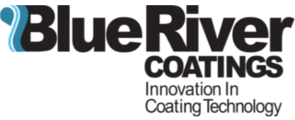Hydro Flex Urethane
Hydrothane Series H-3000
Benefits
Features
- Excellent exterior durability
- Good hardness
- Good impact resistance
- Excellent mar and abrasion resistance
- Excellent linear felixibility
- IR Reflective options available
Finish
- Available in: Satin to High Gloss
- Color: Any, including metallics
Spread Rate
- Theoretical Coverage: 625 sq. ft. per gallon @ 1 mil DFT
- Recommended Coverage: 521 sq. ft. per gallon @ 1.2 mil DFT
Substrates
- Vinyl
- PVC
- Fiberglass
- Wood, primed
- Metal, primed
Specifications
- Binder Type: Polyurethane
- Volume Solids: 39 ± 2% *
- Weight Solids: 42 ± 2% *
- Weight per Gallon: 8.80 lb
- Flash Point: 175ºF / 79.4ºC
- VOC, Material: 193 g/L
- VOC, Coating: 348 g/L
- Shelf Life: 12 months, unopened
- Pot Life (mixed): 12 hours
Performance Data
- Taber Abrasion (ASTM D4060): <100mg loss in 1,000 cycles
- Solvent Resistance (ASTM D5402): Pass 50 double rubs acetone gasoline, lacquer thinner, MEK
- Flexibility (ASTM D522): Good
- Pencil Hardness: HB
Certifications
- AAMA 615-20 Passed Sep 2020
Surface Preparation
- Wood: Apply an appropriate primer according to the manufacturer's instructions, contact Blue River Coatings for compatibility. Once the primer is dried, sand with a fine grain sandpaper until smooth. Apply Hydro Flex to the debris-free surface.
- Metal: Apply an appropriate primer according to the manufacturer's instructions, contact Blue River Coatings for compatibility. Clean the surface with a mild detergent, rinse with distilled water, and dry.
- Vinyl: Abrade the surface with a maroon Scotch Brite pad, remove any debris from the surface, wipe with an acetone-soaked clean towel. Let the acetone flash from the surface before applying the coating.
- PVC: Refer to surface preparation for Vinyl. Application of Interlux 216 may be required to improve adhesion.
- Fiberglass: Refer to surface preparation for Vinyl. Flame treatment or application of Interlux 216 may be required to improve adhesion.
Coating Preparation
- Mix Ratio: 10% Part B by volume
- 1 Quart: 3.2 fl oz Part B to 28.8 fl oz Part A
- 1 Gallon: 12.8 fl oz Part B to 115.2 fl oz Part A
Application Methods
With the surface and coating properly prepared, follow the below recommendations.
Add deionized water to reach the correct viscosity level (Blue River Coatings recommends 18 - 22 seconds on a Zahn #3). For better results, filter the coating through a fine mesh cone strainer. The temperature should be above 60°F and relative humidity should be above 20% at the time of application.
- Spraying: Apply a tack coat followed by a medium wet coat over the surface. Apply with an HVLP spray gun with tip size of 1.8-2.0 mm and air pressure of 25-40 psi. Nozzle size, air pressure, and viscosity are important parameters for proper application, flow, and leveling of the coating.
Dry Times
Clean-Up
Cleaning Coated Windows and Door Frames
After the window has been coated, it should not be washed for two weeks to allow for complete curing of the coating. Once it has cured for two weeks, the coated vinyl surface may be cleaned with a mild soap* and water, using a lint-free rag or lint-free paper towel. Do not use solvent or abrasive materials, such as Scotch Brite pads. Clean the glass of the window with Windex or Ivory dish soap.
To clean:
- Vacuum dirt from sill and track areas before washing
- Clean window and/or door frames with a mixture of mild soap and water
- Abrasive or caustic cleaners or solvents are never recommended because they may cause permanent damage to the frame finish
- Mild, nonabrasive soaps are usually safest for most dirt and stain removal
- Always rinse completely with clean water and wipe or pat dry
- Check to make sure certain drainage or "weep" holes are always clear of dirt or obstruction both inside and outside the window or door
